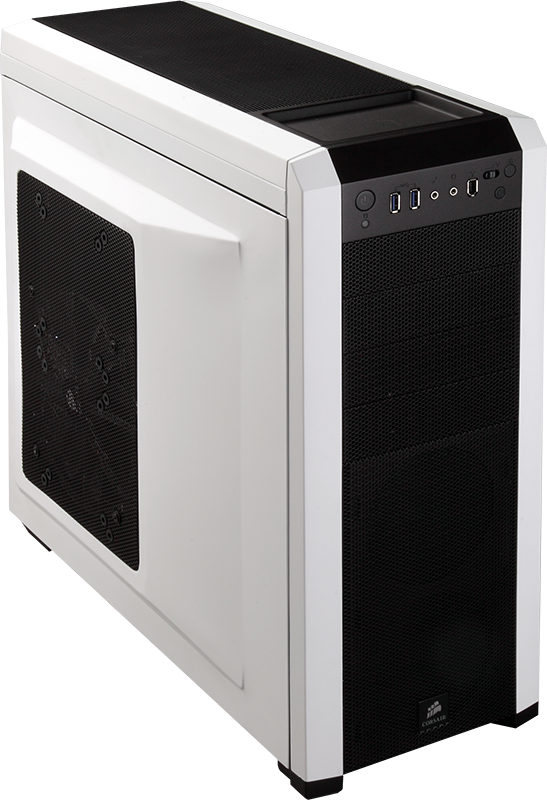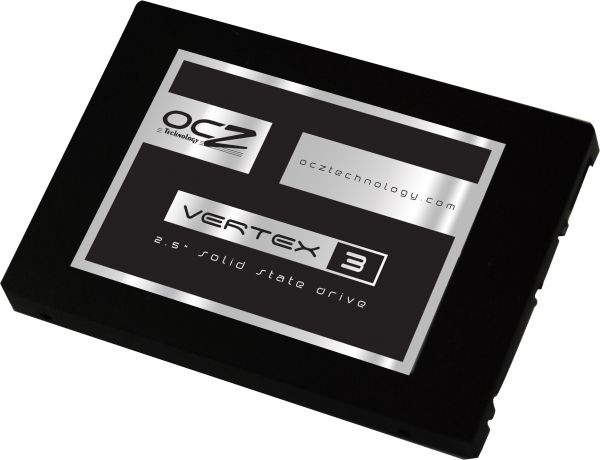Holiday 2011 Midrange System Buyer's Guide
by Zach Throckmorton on December 6, 2011 12:00 AM EST- Posted in
- Guides
- AMD
- Intel
- Sandy Bridge
- Llano
- Holiday 2011
- midrange
- NVIDIA
The Intel Core i5-2500K CPU
Intel's Sandy Bridge architecture based Core i5-2500K needs little introduction at this time. Almost a year after its release, it remains unrivaled in terms of performance, power consumption, enthusiast-friendly overclockability, and price. Anand reviewed the CPU earlier this year, and I summarized the Sandy Bridge CPU and chipsets in a previous buyer's guide. You can also check Bench for detailed metrics on the 2500K's performance. Simply put, you can't buy a better processor for the money, and its performance for its cost makes it a tremendous value.
The components
I've recommended the Biostar TZ68A+ in previous guides and it continues to be my go-to Z68 chipset-based LGA 1155 motherboard. I continue to have great experiences with it (like no DOA boards, knock on wood), and the many I've put in systems continue running without issue. Its feature set is good, its performance is great, and its cost is comparatively low. Perhaps its only negative is that it has fewer than average rear USB ports; you might need a USB port dock if you'll be attaching a lot of peripherals to it.

For the graphics card, we're highlighting the Radeon HD 6850. Prices of cards based on this GPU have fallen over the last few months to lows of around $130 after rebate, where it offers unbeatable performance for the price. The GTX 460 1GB is its closest NVIDIA competitor, performance-wise, as you can see from Bench. The two cards are very evenly matched, but the Radeon HD 6850's lower power consumption and lower price tag make it the better buy. Succinctly, it can play even the most demanding games at high resolutions at acceptable frame rates. AMD's HD 7000 series should come out in the not-too-distant future, but we can't share any details on where those will rank right now.
Because Sandy Bridge CPUs are less responsive to faster RAM than AMD's Llano APUs, the Core i5-2500K system requires nothing more than standard budget DDR3, in this case, an 8GB kit. For storage, we've opted to go with a slightly less expensive but still solid performing SSD, OCZ's Vertex 3. 60GB is enough space for your OS and applications, and like the $800 AMD build, the Samsung F3 1TB HDD is a lot of space for big game and media libraries.
Though neither the i5-2500K nor the Radeon HD 6850 are power hogs, Corsair's Builder Series CX500 offers a lot of value for midrange builders at the $50 (after rebate) price point. It's more than capable of powering this system, and leaves room for future upgrades that might be more demanding on the power supply (e.g. a Core i7 CPU, faster video card, or a second Radeon HD 6850 for CrossFire). Dustin reviewed the Corsair Carbide 500R recently and after getting my own hands on one, I agree with his conclusions: it has excellent thermals and acoustics, it's extremely easy to work with, and it's well-built. Note that the white version is in the components list below, but it's also available in black.
| Component | Product | Price | Rebate |
| Processor | Intel Core i5-2500K | $220 | |
| Motherboard | Biostar TZ68A+ | $95 | |
| Video card | Gigabyte Radeon HD 6850 | $150 | -$20 |
| RAM | Kingston 8GB DDR3 1333 | $35 | |
| SSD | OCZ Vertex 3 | $100 | -$20 |
| HDD | Samsung F3 1TB | $150 | |
| Power supply | Corsair Builder Series CX500 | $60 | -$10 |
| Case | Corsair Carbide Series 500R | $140 | -$10 |
| Optical drive | LITE-ON iHAS324-98B | $20 | |
| Operating system | Windows 7 Home Premium 64-bit (OEM) | $100 | |
| Total: | $1070 | $1010 |
Summary

The Intel system outlined above is about $200 more expensive than the AMD system on the previous page. That's a 25% cost increase from the A8-3850 APU rig. Is it worth it? As you can see from the Bench comparison, the only aspects of performance where the A8 wins are idle and load power consumption. As for actual computing performance, it's not even close. Similarly, the discrete Radeon HD 6850 is leagues ahead of the on-die APU's graphics. But it is critically important to understand what the benchmark numbers mean in reality. For a casual computer user, the A8-3850 is more than adequate. However, it is not an enthusiast's chip, whereas the i5-2500K is essentially the entry-level enthusiast's processor. If you perform more demanding tasks like pro-am or professional graphics or video editing, or you're a hardcore gamer, you should spend the extra $200 and go with the Core i5-2500K system.
For those who use their PC to work hard and prefer to play elsewhere, and don't want to break the bank on near-bleeding edge performance, we've got you covered on the next page.











57 Comments
View All Comments
Will Robinson - Tuesday, December 6, 2011 - link
I agree a good SSD makes a big difference to the feel and function of the rig.I recently installed a Patriot Wildfire SSD 120GB running Win 7 64-bit and it is impressive.
Great bang for the buck.
demonbug - Tuesday, December 6, 2011 - link
Definitely agree, my 64 GB SSD has made a world of difference. It provides plenty of space for OS and applications; games go on my spinning drive.It can be a pain to manage manually, though, as even if you tell Windows to put all your documents etc. on the HDD there are a lot of programs that will ignore this and automatically put things on your SSD (they seem to assume that your document folders are in the standard location and don't bother checking or asking where you want to put user data). This is probably where the Z68 method of using the SSD as a cache drive would be really nice (I put my system together about a year before Z68 came out), just to save you the trouble of managing things by hand when software companies are idiots (biggest issue I ran into was actually Amazon's downloader - not only does it prevent you from selecting a download location, once it downloads it also unpacks without asking you where to put it; when the program you are downloading is 10 GB [BF3], meaning you actually need 20 GB+ free on a 64 GB SSD, this is an issue).
stanwood - Tuesday, December 6, 2011 - link
Some of the geeks who read your site don't game. But we do use our computers for work. So I really appreciate the high-end "worker" build.One question. My current setup chokes in RAW image processing in Adobe Lightroom 3. Is HT in the 2600K likely to help here? (does LR3 make good use of multi-threading?)
Z Throckmorton - Tuesday, December 6, 2011 - link
Hi Stanwood - I do a bit of image processing in Lightroom 3, and when rendering previews, LR3 pegs all eight 'cores' of my i7-2600K. So it is worth considering springing the extra $100 on the 2600K vs the 2500K. If nothing else, you can always buy both chips, compare them, and then sell the chip you don't end up keeping. The 2500K and 2600K hold their values very well and you'd likely only end up losing out $20-30.LeftSide - Tuesday, December 6, 2011 - link
Stanwood, it would help to know what your current hardware is. My old system would stutter while editing, viewing, and processing raw images. It was a q6600 with 4gb of ram.My new system is a an 2500k with 8gb of ram, and it runs smooth. I think the ram was my biggest bottle neck, although I now edit my RAWs on a separate hard drive that has no programs installed on it. I can see how you could choke down a system if windows, lightroom, and the raw files are all on the same HD.
stanwood - Tuesday, December 6, 2011 - link
Thanks for the response Zach! I will go with the 2600K.LeftSide, currently I have no desktop system. Only a T61 notebook that I dock into a nice big Dell UltraSharp 2408WFP display. The Thinkpad runs Win7pro 64 on a C2D T9300 @ 2.5GHz with 4GB ram and an NVidia Quadro NVS 140M with 128MB . I run LR3 in 64-bit.
For most work this system has been great. And of course I can move easily to the couch. But once I started to take pictures in RAW and process them I noticed the limitations. It works (choke was really an exageration) but life is a bit slow. Also ripping DVDs to put onto my HDD for travel takes a while.
My work issued laptop is a newer T410 but has a comparable processor. And it can really slow down when I have lots of PPT and XLS files open, plus running Emacs, Exceed, Lotus Notes and Lotus Sametime. For work my system seems to be CPU and RAM limited.
So I'm thinking to build myself a more powerful desktop system and use it for work, photo processing, and ripping DVDs. A SB system on Z68 with HD3000 graphics seems like a good start. I can spend my money on CPU cores, RAM, and an SSD. And I get access to Quicksync. I don't game but I may later try out a retail dGPU and see it it helps. If not I'd return it.
I can always couch surf on my T61 and there's an excuse to start eyeing tablets . . .
Achilles97 - Tuesday, December 6, 2011 - link
Is it really worth spending $140 on a case in a $1000 build? That's 14%. What about a $60 Antec 300 Illusion?tsnorquist - Tuesday, December 6, 2011 - link
I'm with you. Get a cheaper case and invest in a video card.erple2 - Tuesday, December 6, 2011 - link
Normally, I'd agree with you. However, that $140 case will last you as long as you want it to, probably through several "builds". And that's where the niceness of the $140 case comes into play.If you plan on throwing everything out on the next "upgrade", then case prices don't really matter all that much. But I can tell you that I've enjoyed working on my Antec P182 case for the past 3 builds I've made for it. It's more than paid for its $140 price tag IMO.
Had I only made a single build, and trashed it for the next one, I'd agree with you. So, if you intend to reuse as much as you can for the "next" build (which, by the wording in the article seems to be "2016"), maybe that doesn't matter that much. But then again, saving 80 dollars over 7 years is only about 12 dollars per year. Is that worth it? Particularly if the cheaper cases are more difficult to live with? I dunno.
DanNeely - Tuesday, December 6, 2011 - link
Depends how often you upgrade your systems. Cases from 5 years ago often won't hold modern full length GFX cards, are generally lacking in PSU mounts with external intake, won't have behind the board cable management, and will have obsolete front panel connectors. I don't know what to expect over the next 5 years; but I do assume our current state of the art cases will be found lacking in multiple must have feeatures for a good enclosure.